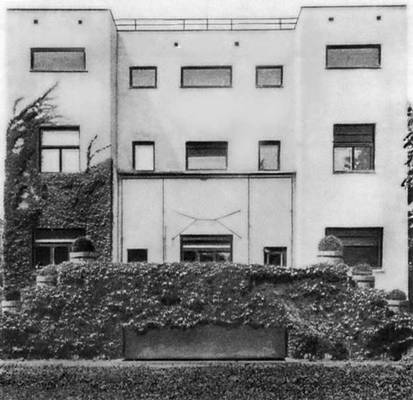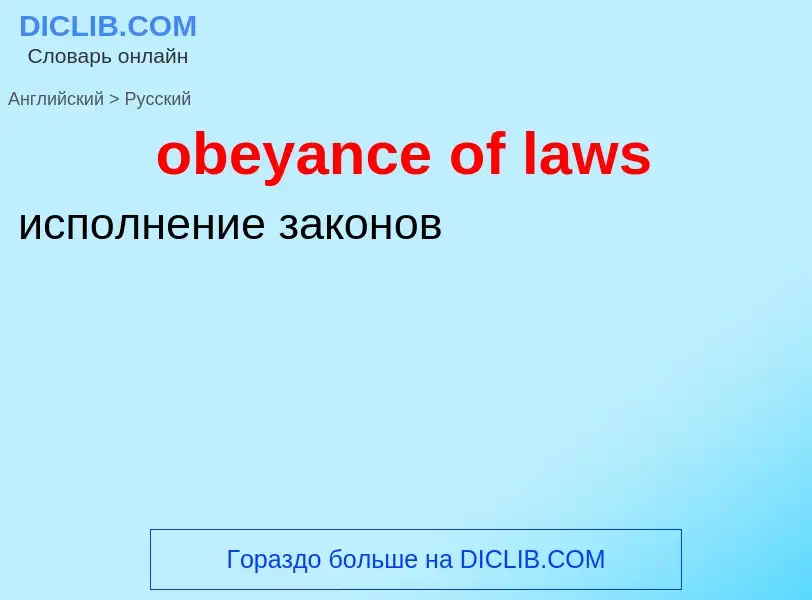Перевод и анализ слов искусственным интеллектом ChatGPT
На этой странице Вы можете получить подробный анализ слова или словосочетания, произведенный с помощью лучшей на сегодняшний день технологии искусственного интеллекта:
- как употребляется слово
- частота употребления
- используется оно чаще в устной или письменной речи
- варианты перевода слова
- примеры употребления (несколько фраз с переводом)
- этимология
obeyance of laws - перевод на русский
Определение

Википедия
The laws of thermodynamics are a set of scientific laws which define a group of physical quantities, such as temperature, energy, and entropy, that characterize thermodynamic systems in thermodynamic equilibrium. The laws also use various parameters for thermodynamic processes, such as thermodynamic work and heat, and establish relationships between them. They state empirical facts that form a basis of precluding the possibility of certain phenomena, such as perpetual motion. In addition to their use in thermodynamics, they are important fundamental laws of physics in general, and are applicable in other natural sciences.
Traditionally, thermodynamics has recognized three fundamental laws, simply named by an ordinal identification, the first law, the second law, and the third law. A more fundamental statement was later labelled as the zeroth law, after the first three laws had been established.
The zeroth law of thermodynamics defines thermal equilibrium and forms a basis for the definition of temperature: If two systems are each in thermal equilibrium with a third system, then they are in thermal equilibrium with each other.
The first law of thermodynamics states that, when energy passes into or out of a system (as work, heat, or matter), the system's internal energy changes in accordance with the law of conservation of energy.
The second law of thermodynamics states that in a natural thermodynamic process, the sum of the entropies of the interacting thermodynamic systems never decreases. A common corollary of the statement is that heat does not spontaneously pass from a colder body to a warmer body.
The third law of thermodynamics states that a system's entropy approaches a constant value as the temperature approaches absolute zero. With the exception of non-crystalline solids (glasses), the entropy of a system at absolute zero is typically close to zero.
The first and second laws prohibit two kinds of perpetual motion machines, respectively: the perpetual motion machine of the first kind which produces work with no energy input, and the perpetual motion machine of the second kind which spontaneously converts thermal energy into mechanical work.



![Two objects in uniform circular motion, orbiting around the [[barycenter]] (center of mass of both objects) Two objects in uniform circular motion, orbiting around the [[barycenter]] (center of mass of both objects)](https://commons.wikimedia.org/wiki/Special:FilePath/Binary system orbit q=3 e=0.gif?width=200)
![A simulation of a larger, but still microscopic, particle (in yellow) surrounded by a gas of smaller particles, illustrating [[Brownian motion]]. A simulation of a larger, but still microscopic, particle (in yellow) surrounded by a gas of smaller particles, illustrating [[Brownian motion]].](https://commons.wikimedia.org/wiki/Special:FilePath/Brownian motion large.gif?width=200)

![reaction force]] downwards using [[rocket engine]]s. This pushes the rocket upwards, without regard to the ground or the [[atmosphere]]. reaction force]] downwards using [[rocket engine]]s. This pushes the rocket upwards, without regard to the ground or the [[atmosphere]].](https://commons.wikimedia.org/wiki/Special:FilePath/Iridium-1 Launch (32312419215).jpg?width=200)
![cork]], and [[toothpick]] is on top of the pen's tip cork]], and [[toothpick]] is on top of the pen's tip](https://commons.wikimedia.org/wiki/Special:FilePath/Masocentro1.jpg?width=200)
![a celebrated theorem that relates symmetries and conservation laws]], a key development in modern physics that is conveniently stated in the language of Lagrangian or Hamiltonian mechanics. a celebrated theorem that relates symmetries and conservation laws]], a key development in modern physics that is conveniently stated in the language of Lagrangian or Hamiltonian mechanics.](https://commons.wikimedia.org/wiki/Special:FilePath/Noether.jpg?width=200)
![Artificial satellites move along curved [[orbit]]s, rather than in straight lines, because of the Earth's [[gravity]]. Artificial satellites move along curved [[orbit]]s, rather than in straight lines, because of the Earth's [[gravity]].](https://commons.wikimedia.org/wiki/Special:FilePath/Skylab and Earth Limb - GPN-2000-001055.jpg?width=200)
![Space Shuttle ''Atlantis'']], propel matter in one direction to push the craft in the other. This means that the mass being pushed, the rocket and its remaining onboard fuel supply, is constantly changing. Space Shuttle ''Atlantis'']], propel matter in one direction to push the craft in the other. This means that the mass being pushed, the rocket and its remaining onboard fuel supply, is constantly changing.](https://commons.wikimedia.org/wiki/Special:FilePath/Space Shuttle Atlantis launches from KSC on STS-132 side view.jpg?width=200)

